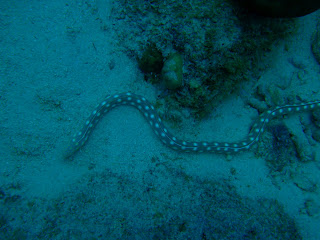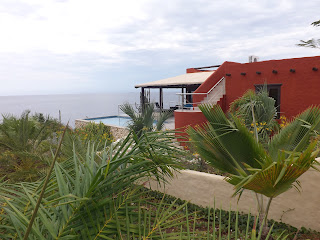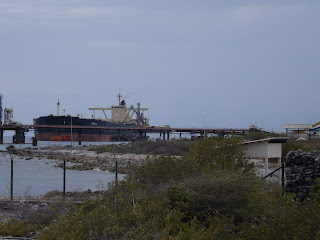Park next to the water and walk in, what could be easier?
First octopus we've seen here is surprising for being so out in the open. Normally shy, he quickly hid under this rock as we approached.
More Bari in-shore sightings...
Needlefish
Peacock Flounder
Great Barracuda
Donkey Dung Sea Slug
Once on the reef turning to the right (north) in front of the seaside condos takes you to what is commonly meant as the Bari dive site. If you turn left or(south) you find a very different section of reef, an area damaged a number of years ago by the surge of a passing huricane. It was also the dumping ground for the town's trash. In fact Bari is papimiento for barrel and if you look closely, you will see shreds of old rusting oil drums. Maybe it is because it is host to a variety of reef structure, part hard corals, part sand chutes that it attracts twice as many groups of marine animals.
Today, we turned left and in the next forty minutes Charles captured a number of good shots of the junkyard part of Bari's residents.
Rod with school of Wrasse.
Grapes of wrasse.
Queen angelfish.
Graysby (small member of grouper family) with cleaner shrimp.
Scorpion fish.
Blue tube sponge.
Junk tire with encrusting rope sponge.
Spotted moray eel looks mean but is merely a mouth breather.
Susan says she was meant to spend her life hanging out with fish.

Schooling Small Mouthed Grunts.
Banded Butterfly Fish
This spider looking creature is an Arrow Crab.
The appropriately named Rock Beauty.
At first glance, I thought this Sharptail Eel was a snake.
Spanish Hogfish dancing with Sharptail Eel.
Mahogany snappers are plentiful on Bari.
With so many fish swarming this one site, it is easy to understand why multiple dives are required to get the Bari best experience.












































